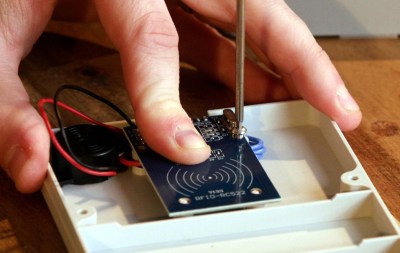Modern fertilizer manufacturing uses the Haber-Bosch and Ostwald processes to fix aerial nitrogen as ammonia, then oxidize the ammonia to nitric acid. Having already created a Haber-Bosch reactor for ammonia production, [Markus Bindhammer] took the obvious next step and created an Ostwald reactor to make nitric acid.
[Markus]’s first step was to build a sturdy frame for his apparatus, since most inexpensive lab stands are light and tip over easily – not a good trait in the best of times, but particularly undesirable when working with nitrogen dioxide and nitric acid. Instead, [Markus] built a frame out of aluminium extrusion, T-nuts, threaded rods, pipe clamps, and a few cut pieces of aluminium.
Once the frame was built, [Markus] mounted a section of quartz glass tubing above a gas burner intended for camping, and connected the output of the quartz tube to a gas washing bottle. The high-temperature resistant quartz tube held a mixture of alumina and platinum wool (as we’ve seen him use before), which acted as a catalyst for the oxidation of ammonia. The input to the tube was connected to a container of ammonia solution, and the output of the gas washing bottle fed into a solution of universal pH indicator. A vacuum ejector pulled a mixture of air and ammonia vapors through the whole system, and a copper wool flashback arrestor kept that mixture from having explosive side reactions.
After [Markus] started up the ejector and lit the burner, it still took a few hours of experimentation to get the conditions right. The issue seems to be that even with catalysis, ammonia won’t oxidize to nitrogen oxides at too low a temperature, and nitrogen oxides break down to nitrogen and oxygen at too high a temperature. Eventually, though, he managed to get the flow rate right and was rewarded with the tell-tale brown fumes of nitrogen dioxide in the gas washing bottle. The universal indicator also turned red, further confirming that he had made nitric acid.
Thanks to the platinum catalyst, this reactor does have the advantage of not relying on high voltages to make nitric acid. Of course, you’ll still need get ammonia somehow.


















